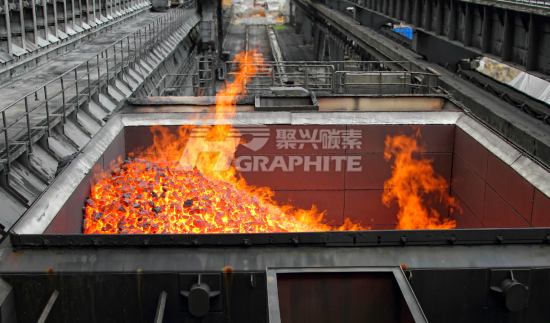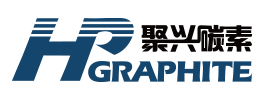【Carburant】2025 Market Forecast: Weak Demand and Intensified Competitive Pressure

【Carburant】2025 Market Forecast: Weak Demand and Intensified Competitive Pressure
The carburant prices in 2025 are expected to fluctuate, with continued competitive pressure within the industry and price competition. The main reasons include:
1. Cost Factors:
In 2025, petroleum coke prices are expected to remain differentiated. Mid-sulfur and low-sulfur coke are likely to have slight price increases, while high-vanadium petroleum coke prices will fluctuate at low levels. The main price range for petroleum coke is as follows:
1. Low-sulfur coke (sulfur ~0.5%) will be priced between ¥2,500-4,000/ton.
2. Mid-sulfur coke (sulfur ≤3.0%) will be priced between ¥1,300-3,500/ton.
3. High-sulfur coke (sulfur ~5.0% regular grade) will be priced between ¥900-2,700/ton, with some smaller coke types experiencing slight price increases.
The low-sulfur calcined petroleum coke market is expected to remain under pressure, with market pricing primarily following low-sulfur petroleum coke trends. The mainstream transaction price for low-density, low-sulfur calcined petroleum coke used in carburants is expected to be ¥3,300-3,800/ton. Mid-to-high sulfur calcined petroleum coke prices will continue to be under pressure, with mainstream transaction prices for sulfur 3.0% calcined petroleum coke at ¥1,900-2,200/ton and sulfur 3.5% at ¥1,700-2,000/ton.

2. Supply Factors:
The calcined coal carburant market is mainly concentrated in the Ningxia region. Since 2017, high environmental standards have impacted production in the region, and this will continue to limit the market in 2025. Smaller enterprises with inadequate environmental facilities are expected to be eliminated. A particular company in Ningxia may increase production capacity through technological upgrades, but downstream demand has not yet shown significant improvement, and overall supply in the industry is expected to remain largely unchanged.
The supply of calcined petroleum coke carburants is expected to continue increasing in 2025, primarily produced in Shandong, Tianjin, and Liaoning. After recent environmental improvements, most enterprises are now operating within compliance, so environmental pressures will ease in 2025. However, downstream demand remains limited, creating tension in supply and demand, which will increase competition. Some enterprises may choose to reduce production or suspend operations.
As for graphitized petroleum coke carburants, several factors influence the supply:
The negative electrode materials market is currently oversupplied, with a lower than expected utilization rate. The production profits of negative electrode producers are relatively thin, and the "golden era" of profits is unlikely to return in the short term. Therefore, some companies have postponed or canceled their new project construction and production plans. 2024 may be the last year for the large-scale release of negative electrode material production capacity in China, limiting the growth in the production of graphitized coke carburants as a by-product.
With the continuous improvement in quality requirements for carburants and some enterprises using graphitized coke for crucibles and trays, demand for carburants may rise, driving production.
Some negative electrode enterprises are transitioning from crucible furnaces to box furnaces, which may reduce the by-product graphitized coke carburant output.
In conclusion, the supply increase in China's carburant market will be limited in 2025, with clearer differentiation among product types. The demand for graphitized coke carburants is expected to grow, and downstream markets will increasingly consider high-quality carburants due to rising energy consumption and emissions standards.
3. Demand Factors:
In 2025, the economy is expected to continue recovering. Despite the ongoing decline in real estate demand, the rebound in manufacturing and infrastructure investment will support steel demand, which will offer some support for steel prices. Some market participants are optimistic about the outlook for 2025, and with policy support and market adjustments, the steel industry is expected to see new development opportunities.
The domestic steel market is expected to rise slightly in 2025. The Chinese steel industry is currently undergoing deep adjustments, focusing on controlling crude steel production, optimizing product structure, and transitioning to green and low-carbon processes. According to the "2024-2025 Energy Conservation and Carbon Reduction Action Plan," stricter capacity structure adjustments will be made in the steel industry during the 14th Five-Year Plan period. The action plan aims for 30% of energy-efficient leading capacity by 2025, with outdated capacities undergoing technological upgrades or being phased out, and ultra-low emissions modifications covering over 80% of capacities. This will tighten industry supply. Overall, downstream demand for carburants will remain driven by the steel industry’s needs, and the focus should be on macro policies and implementation.
In conclusion, the calcined coal carburant market is expected to maintain stability through Q1 2025, with slight price declines of ¥50-100/ton after the Spring Festival due to reduced demand. In Q2, the relaxation of heating season restrictions will lead to an overall increase in industry production, although demand growth remains limited, keeping prices stable. In the second half of the year, limited raw material price support will result in some price increases, but demand from downstream markets will be insufficient to drive significant price hikes.
The regional market price for general petroleum coke carburants is expected to be ¥1,400-2,100/ton (C>90; A<8.5). The price of calcined petroleum coke carburants is mainly influenced by raw material prices and downstream consumption. The demand for low-sulfur screening materials is stable, with prices fluctuating, while mid-to-high sulfur screening materials will still face supply-demand pressure, with limited price increases.
The regional market price for calcined petroleum coke carburants is expected to be ¥3,000-5,000/ton (S<0.5; A<0.5; VM<0.5; 1-5mm). Graphitized coke carburant prices will be primarily determined by supply and demand conditions, with limited support from cost factors. The market will continue to be oversupplied in the short term, and companies will adjust production plans flexibly based on market conditions.
The average price for graphitized petroleum coke carburants is expected to be ¥3,000-4,000/ton (C≥98%, S≤0.05%, particle size: 1-5mm, North China).
Feel free to contact us anytime for more information about the carburant market. Our team is dedicated to providing you with in-depth insights and customized assistance based on your needs. Whether you have questions about product specifications, market trends, or pricing, we are here to help.
No related results found








0 Replies